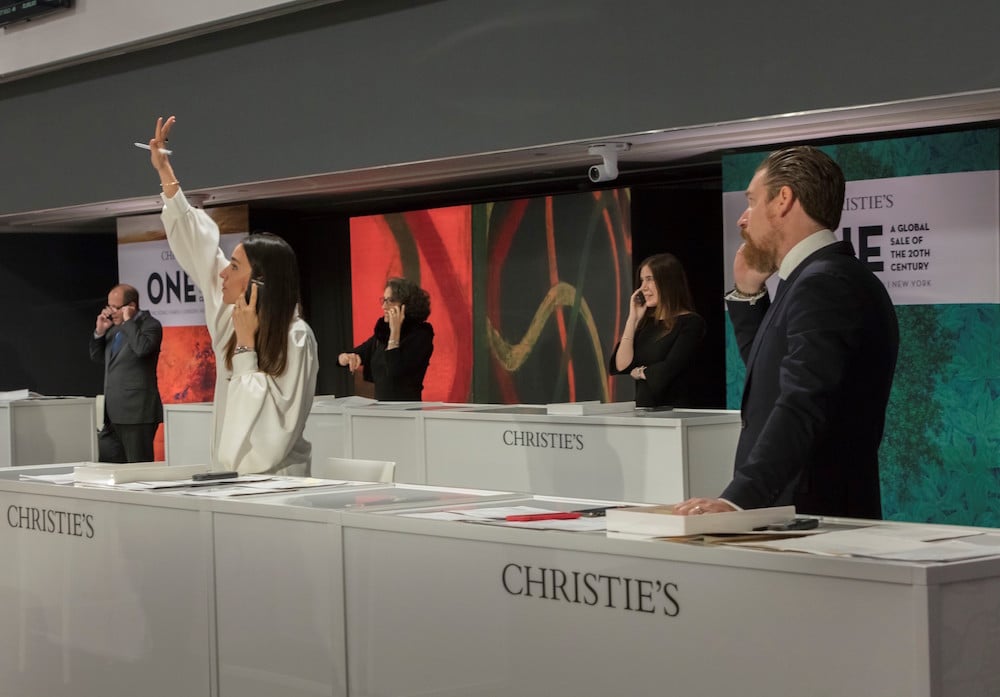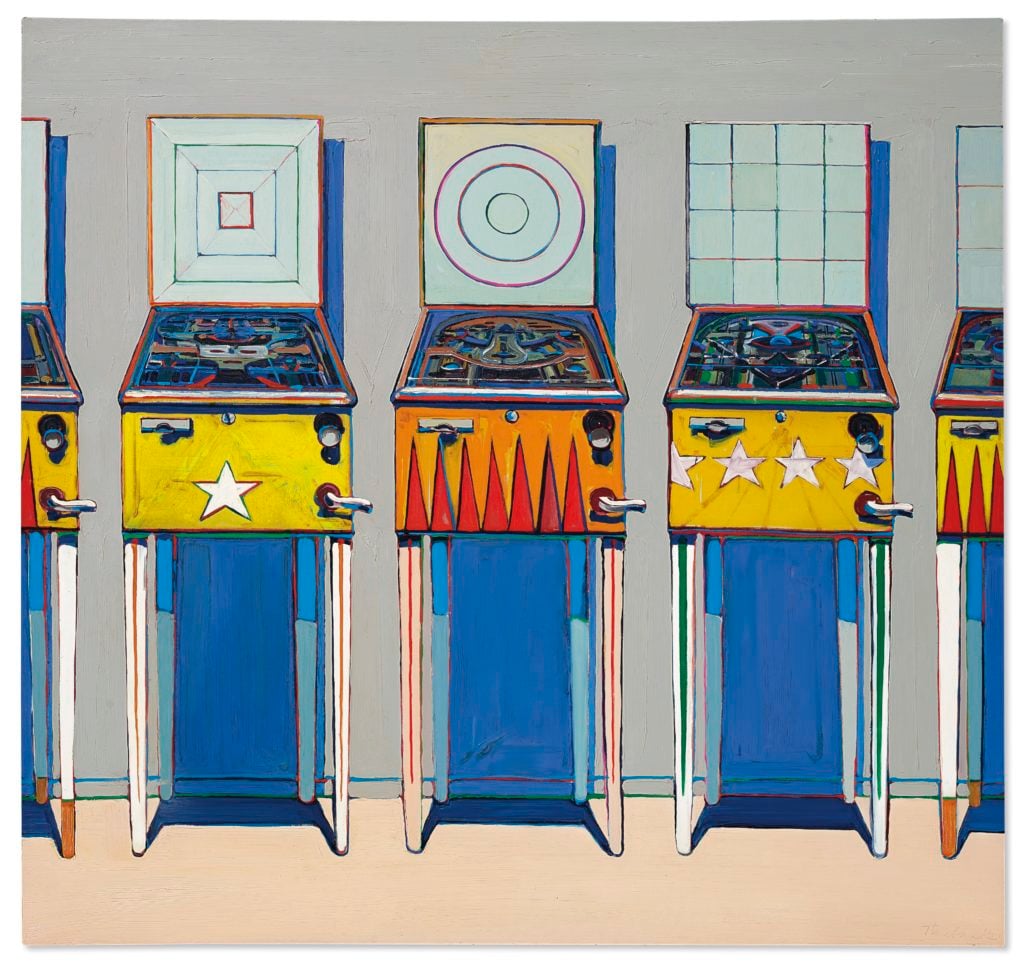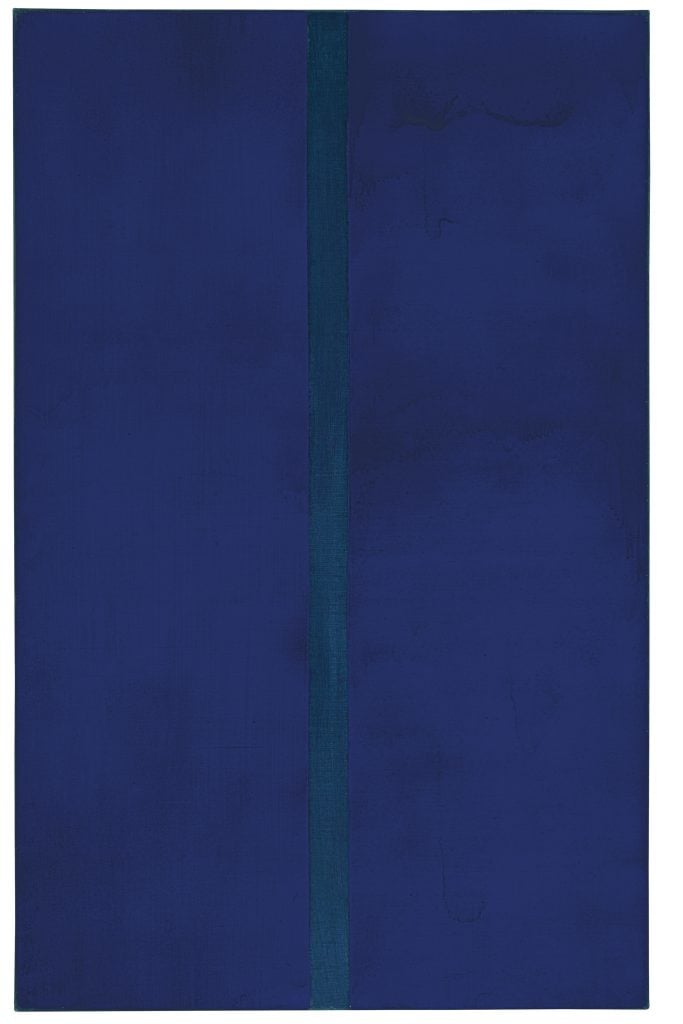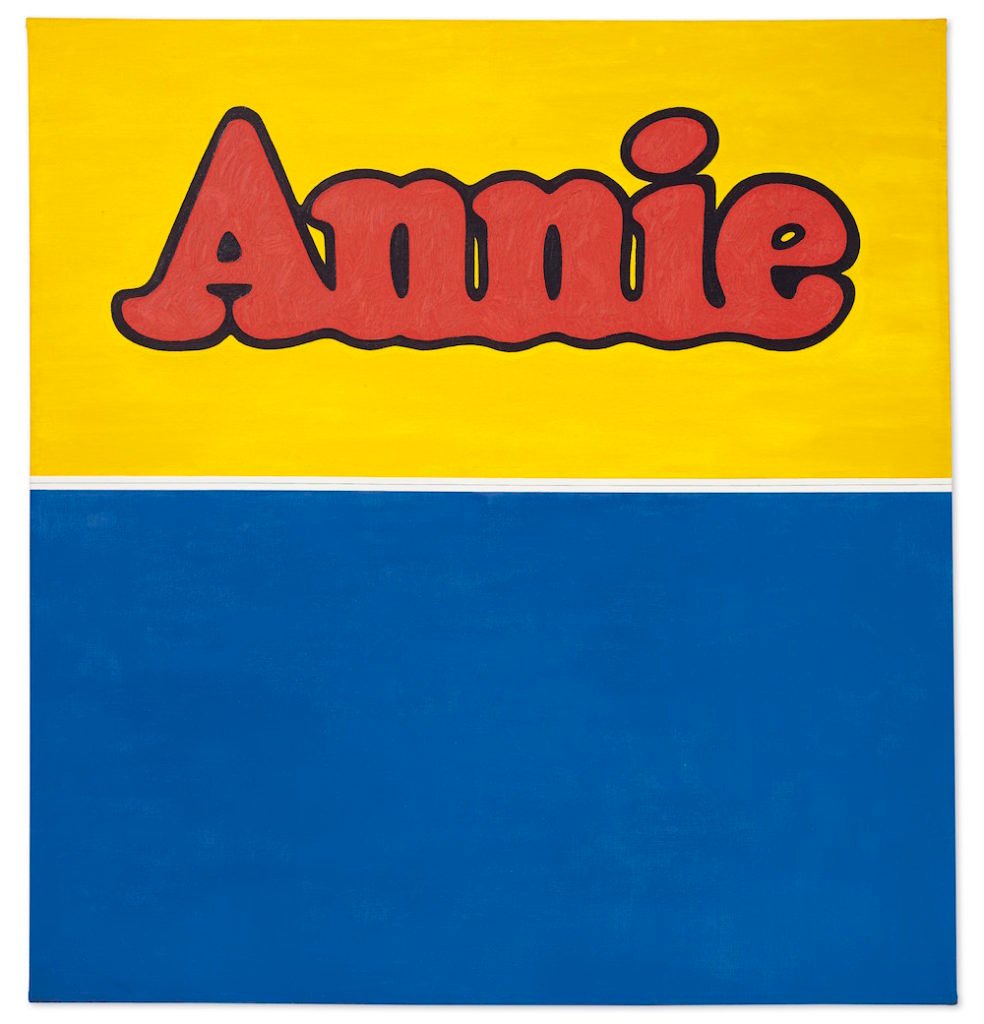Auctions
Christie’s First-Ever ‘Relay’ Sale Brought in an Impressive $421 Million in a Four-Hour, Four-City Digital Marathon
Christie's pulled off a marathon four-hour sale with an innovative new platform.

Christie's pulled off a marathon four-hour sale with an innovative new platform.

Eileen Kinsella

Auction houses have had to rapidly and radically alter their live auction business models to adapt to the lockdown era. This new reality was on full display—along with some technical glitches—this morning at Christie’s, which held its sale of Impressionist, modern, postwar, and contemporary art.
The four-part “relay” sale, titled “ONE” took place simultaneously in four international art-market hubs: Hong Kong, Paris, London, and New York.
The bulk of the 79 artworks (three were withdrawn before the sale) were offered in New York, starting at about 11:30 a.m. EST. The first Hong Kong leg of the sale, which started at 8:30 p.m. HKT, was delayed by more than 45 minutes, due to what the auction house said was “unprecedented bidding” at the modern and contemporary auction there that directly preceded “ONE.”
A different auctioneer in each region led each respective part of the sale. It got off to a somewhat bumpy start as the various salesrooms were clearly trying to get their bearings with the relaying bids coming in from across cities, time zones, and video screens, not to mention juggling four different currencies over the course of the sale.
There was some confusion, for example, when London based-auctioneer Jussi Pylkannen announced during the bidding for a Pierre Soulages painting, “I’m selling it at…”, only to be interrupted by Cécile Verdier, head of Christie’s France, who said “No! I’m selling it!”
At another point, when Pylkannen was suggesting to a client that a specific higher bid “could take it,” meaning win the work, it was clear Verdier was unsure if he was actually submitting an actual bid (he wasn’t) or theorizing about it to the client.

Wayne Thiebaud, Four Pinball Machines (1962). Photo courtesy of Christie’s Images Ltd 2020.
Nevertheless, the auction house pulled off a marathon effort that saw bidders active from all corners of the world as the hours ticked by. And, despite some of the hiccups, the sale picked up steam and fell into a palpable rhythm as it moved west across the course of nearly four hours.
All in all, the sale brought in just under $421 million, at the high end of its $332.4 million to $444 million estimate. It also sold 94 percent by lot and 97 percent by value. The buyer breakdown was fairly evenly divided, including 37 percent from the Americas; 38 percent from Europe, the Middle East, and Africa; and 26 percent from the Asia-Pacific region.
The highest priced work of the sale was $46.2 million achieved for Roy Lichtenstein’s Nude with Joyous Painting (1994), estimated at around $30 million. The bidding was intense after New York auctioneer Adrien Meyer opened the action at around $20 million and New York-based specialists Barrett White and Maria Los battled it out in half-million-dollar increments for their respective phone clients, all the way from the the $30-million level, when White’s bidder quit at $35 million, only to quickly reconsider and jump back into the competition.
The real surprise after that was when Christie’s director of education in Asia, Elaine Kwok, jumped in with an entirely new bid at $37 million for the Lichtenstein via the Hong Kong stream. The Hong Kong client won the work at a hammer price of $40.5 million.

Pablo Picasso, Les femmes d’Alger (version ‘F’) (1955). Image courtesy of Christie’s
The action surrounding the second-highest lot, Barnet Newman’s Onement V (1952) was a bit more subdued and puzzling. Perhaps out of concern for how long the sale was taking, Meyer announced at the start of the New York portion that the brilliant blue “zip” painting, once a rarity that connoisseurs fought tooth-and-nail for—had been bumped up by at least a dozen lots, immediately following another major work, Picasso’s Les femmes d’Alger (version ‘F’) (1955), which drew multiple competing bids and sold for a premium-inclusive $29.5 million.
A Christie’s spokesperson told Artnet News the shuffling of the Newman lot was “to accommodate a telephone bidder under a specific set of circumstances. This will not be a precedent for the future.”
Onement V carried what in retrospect looks like a lofty estimate of $30 million to $40 million. Meyer opened the bidding at $20 million and, after a few bids from Christie’s specialists, including Alex Rotter, the action stalled at $26.75 million. After a few quiet moments, when it became increasingly clear no further bids were coming to push it over the low estimate, Meyer brought down the hammer and Rotter’s client took it for a premium inclusive price of $30.9 million. Though hardly a weak price, it seems demand had fallen below where the auction house originally estimated it.

Barnett Newman, Onement V (1952). Image courtesy Christie’s.
The Newman painting was one of the rare major works not guaranteed. In all, 38, or roughly half of the works in the sale were guaranteed, suggesting a flurry of last-minute deals were made as compared with the tally yesterday, when the list showed 30 guarantees, of which 18 were third-party or outside backers.
Another top-selling lot was Brice Marden’s Complements (2004-07), which sold to one of Rotter’s clients for $30.9 million with premium (estimate: $28—35 million). It marked a new auction record that more than tripled the previous high of $10.9 million set for Marden relatively recently, in November 2019, at Sotheby’s New York for Number Two (1983-84).
Bidding moved fairly quickly for Ed Ruscha’s classic blue-chip work Annie (1962), which was opened with a $14 million bid (estimate: $20—30 million) and was hammered down to Impressionist head Conor Jordan for a client at $17 million, or $23 million with premium.

Ed Ruscha, Annie (1962). Image courtesy Christie’s. The work will be sold at the auction house’s “relay” sale in June.
The price paid for Wayne Thiebaud’s stunning Four Pinball Machines (1962) at $17.5 million hammer ($19.1 million with premium), marked a new auction record for the artist at roughly double the previous auction high of $8.5 million set at Sotheby’s this past November. Still, the bidding did not exactly soar above the lofty presale estimate of $18 million to $25 million.
A new record was also set for artist Ruth Asawa, whose market has clearly been on the rise of late, when Untitled (S.401, Hanging Seven-Lobed, Continuous Interlocking Form, with Spheres within Two Lobes) (1953-54), sold for $5.4 million, over the $5 million high estimate.
The $1.1 million price achieved for Richard Avedon’s classic black-and-white photograph (which rarely turn up at major marquee auctions), Dovima with Elephants, Evening Dress by Dior, Cirque d’Hiver, Paris (1955), also marked a new auction record.
As always, works that have a past auction history can provide some insight into the trajectory of an artist’s market or a particular work. One of the top selling lots of the sale, Rene Magritte’s L’Arc de Triomphe (1962), sold for $22.3 million today. In November 1992, it was sold at Christie’s New York for $1.1 million.
Meanwhile, Gerhard Richter’s Frost I (1980) sold today for $10.3 million, compared with a May 2007 sale at Christie’s New York when it fetched $2.8 million.
Less momentum was seen for one of the sale’s later lots, Joan Miro’s Peinture (1933), which sold today for $6.2 million. When offered at Sotheby’s New York in November 1999, just over 20 years ago, it sold for $2.3 million.
Of the 10 lots offered in Hong Kong, new records were set for two works, Takeo Yamaguchi’s Yellow Quadrangle (1959), which sold for $1.4 million, and George Condo’s Force Field (2010) which sold for $6.9 million.